Worth Knowing Before You Begin Paddleboarding:
There has been great satisfaction with the shape of all-round paddleboards, making them one of the favourite types of paddleboards for Danes recently. An all-round paddleboard is designed to be user-friendly for everyone. With its user-friendly size, all-round paddleboards ensure that everyone has the opportunity to use it and has the best conditions to practice and learn thoroughly.
It's possible that you won't be able to stand and paddle the first time you try. But remember the classic saying, “practice makes perfect.” So, in the beginning, it can help to kneel until you get the hang of the technique. When you start to feel more confident, you can challenge your balance by standing up. You might fall in the water initially, but there's nothing else to do but get back up and try again. To start, you can move around in shallow water, and after ensuring safe navigation, venture further into deeper water, which also presents more challenges.
With time, you'll get better at paddling forward, and then you can consider trying new manoeuvres that take you to new places. You can, for example, practice turning with the paddle, both to the right and left. When you master these SUP board skills, you can see if you can execute a 180-degree turn, where your paddleboard should turn in the opposite direction from where you started your turn.
Most all-round paddleboards are inflatable, making them easy to transport when you head to the water to use the SUP board. Before you embark, through this guide, you can look forward to what to expect if you choose to use a paddleboard.
In common parlance, it's called both paddleboards and SUP boards, with the latter causing confusion about what SUP actually means. It stands for Stand-up Paddling, which means standing on a board and paddling.
Paddleboard Accessories That Make the Trip More Enjoyable:
In this section, we will provide an understanding of some terms that can be useful to know when you have purchased a paddleboard.

- Paddle: The paddle you use to steer and propel the board.
- Mesh Bag: A waterproof bag that can be fastened to the paddleboard, allowing you to safely carry items on your journey.
- Straps: Straps that can be attached to the paddleboard to secure the paddle and board together.
- Pump: If you choose an inflatable paddleboard, having a pump is essential. Most inflatable paddleboards come with a manual pump. To make it easier to inflate the paddleboard, some people opt for an electric pump, saving both effort and time compared to inflating it manually.
- Leash: Out on the open water, waves can have more power than you might expect. So, make sure there is a leash that connects you to the paddleboard to prevent it from drifting away from you.
- SUP Board Bag: When you buy a paddleboard, it usually comes with a bag for storing the paddleboard and the accompanying equipment. A good tip is to use it to keep your things organized in one place.
-
Repair Tools: If accidents happen and your paddleboard gets a puncture or damage that causes it to lose air, there's no need to invest in a new paddleboard. There are repair kits containing patches and glue that can be applied to the damaged area. It's also possible that the valve may become slightly loose over time, and some repair kits include tools to tighten it, restoring it to the same level of tightness as when the paddleboard was purchased.
Why Have Paddleboards Become So Popular:
Paddleboarding has quickly become a highly popular activity. This is due, in part, to its versatility for people of all skill levels. There are several aspects to paddleboarding. If you're looking for a relaxing time on the water, a paddleboard can be used to gently rock with the waves. If you're seeking fun and adventure, perhaps with family or friends, paddleboarding can be a great group activity. And if you prefer to get some exercise while enjoying your day by the water, a paddleboard can serve as a fitness tool, working on your core strength and balance.
Prepare for Fun Paddleboard Days on the Water:
Prepare for fun and happy days when you use a paddleboard. But before you set off, it's important to prepare for numerous things to ensure you have the best experience with your SUP board.
Consider your clothing. If it's cold, especially if the water is cold, you can quickly get cold. Therefore, it can be helpful to have a wetsuit and other neoprene gear to keep the water away from your body.
Also, remember to have great respect for wind and weather when you venture out on the water. You can learn more about water safety through the Trygfonden foundation.

When the weather is good, having your own paddleboard is a big advantage. This way, you ensure that you can always use it, rather than having to rent it from a third party. If you've used rental paddleboards frequently, owning your own board can be an economical advantage in the long run.
Have fun on your paddleboard, but remember the legislation.
Paddleboards have quickly become a part of Irish life, and as a result, there has been some confusion about how they are classified under current water regulations.
Here, the Irish Surf and Rafting Federation has provided some good advice that we also mention here. If you read more about the federation and their recommendations, you can visit their website.
It's always a good idea to use the leash that comes with it around your ankle. If you happen to fall off your paddleboard, make sure it's at a good distance and use it to hold onto if you don't have the strength or control in the water.
ALWAYS HAVE A LIFE JACKET! It's super simple and a legal requirement in the area. A life jacket must be on board, and we strongly recommend wearing it when you're out on the paddleboard. (At Watery, you can see our selection of life jackets here and ensure that your time on the water is legal and safe.)
Have a phone with you. There are many products that allow you to safely bring your phone onto the water in waterproof conditions. So, if you need to call for help, you can have your phone nearby.
Check your surroundings and look for other people. It's generally not a good idea to go into the water alone. If you do, it's a good idea to inform some relatives and agree to make contact after you've safely landed again.
Irish surfing and rafting organizations, as well as other organizers, offer courses that provide a good introduction to paddleboarding specifics.
A new saying that can be used is “when in doubt, don't paddle out,” and it makes sense. If you're unsure about something, don't go into the water with your paddleboard until you feel safe.
Check and read about wind and weather conditions before heading into the blue waves. If you find yourself in distress, you can use the paddle to signal for help.
Preparing Your Paddleboard:
When you've arrived at the location where you're going to use the paddleboard, here's an explanation of how to easily and efficiently get the paddleboard from the bag to the water.

Start by placing the bag and taking the rolled-up paddleboard out of the bag, if it's an inflatable paddleboard. If you have purchased a hard paddleboard, you can, of course, skip this step and read again when we get to the paddle that is used for propulsion.
Once you have taken it out of the bag, unroll it so that the paddleboard lies completely flat in its full length. Now you are ready to pump it up. Aim to reach the recommended pressure of 1.03 bar. At the beginning, the gauge may not show anything, but continue pumping. There needs to be some pressure before the pump registers it, which requires a bit of air in the beginning. Depending on how hard and fast you pump, the time it takes to fully inflate may vary.

After the paddleboard is fully pumped up, find the paddle and assemble it, ensuring it has your desired length so that you can use it naturally in the water.
Next, attach the leash to the paddleboard, but wait to secure it to your leg until you are near the water or have finished preparing the paddleboard for the trip. Now, attach the fin to the paddleboard. The fin is important for creating stability in the water and also helps navigate the paddleboard in conjunction with how you use the paddle.
The paddleboard is now 100% ready for use, and the last thing you need to do is fasten the leash around your leg, so you always have your paddleboard secured to you in case you fall off. Finally, head off to the blue waves when you are ready.
Things you may not have known about paddleboards:
Paddleboards are a fun and new way to get exercise. At Watery, we believe that having fun while exercising makes the most sense. Based on natural water conditions, we are particularly fond of paddleboards and hope you also find inspiration and desire for them.
All-round paddleboards are the most common size, measuring 320 cm in length, 80 cm in width, and 15 cm in thickness. This ensures a good and stable all-round paddleboard. It weighs 7.4 kilograms alone and should not be pumped to over 15 PSI, equivalent to 1.03 bar.
As mentioned, our paddleboard is designed with everyday people in mind who want exercise and fun on the water. Therefore, it is equipped with a pin front that provides the best conditions for individuals who are not elite paddleboarders. Its large surface also allows for high-speed paddling.
Paddleboards almost guarantee fun and enjoyable moments for everyone, whether it's with friends, family, or even your mother-in-law. There can be almost only positive experiences with a paddleboard, creating good memories for the future.
GET A DISCOUNT CODE WITH 10% OFF
The discount code can be used by all new customers on all products on the website, including the products recommended here in the article.
What are you waiting for? Get more out of your time in and on the water!
What types of paddleboards are there?
There are many types of paddleboards available. It's a good idea to familiarize yourself with the specifications of various paddleboards and the types they are suitable for. The most significant indication of the type of board is often seen in the shape of the paddleboard. The different types of SUP boards typically include an all-round paddleboard, wave paddleboard, race paddleboard, and touring paddleboard. Below, the different types of SUP boards will be described, hopefully giving you a better understanding of which paddleboard suits your specific needs.
The all-round paddleboard is designed for all types of weather, with a large surface that provides extra stability and balance for the user of the paddleboard. The all-round paddleboard is what most people choose to buy the first time, due to its user-friendliness compared to other types of paddleboards where experience can be an advantage. This SUP board is suitable for most situations where fun and play are the keywords for a day on the water.

The race paddleboard is a different story. The paddleboard is designed in a narrow format, where the pointed end is intended to cut through the waves to achieve higher speed quickly. It is a technically challenging paddleboard to handle and requires some training. Since the paddleboard has sharper edges and is narrower in width, it requires significantly more balance. There are various forms within the category of race paddleboards, depending on the type of competition.
Watery presents a review of a SUP board here, where owner Daniel Johannesen specifically explains the all-round paddleboard type.
What paddleboard is recommended for you?
Depending on what you expect to use your paddleboard for, there are different recommendations for paddleboards that are suitable for your specific needs.
If you've never been on a paddleboard before and your long-term goal is to become a great paddleboarder who wants to be fast and even compete at a high level. It may be a good idea to try an all-round paddleboard before jumping straight to a race board. This ensures that you get a feel for what it's like to be on the water on a paddleboard.
The right clothing for paddleboarding
Even though Ireland is a wonderful country to live in, we can't always count on high temperatures and a heatwave during the summer. Our lovely, unpredictable country is known for its occasional weather swings. But that shouldn't stop you from heading out into the blue waves, whether it's with a paddleboard or not. This is where the expression “There's no such thing as bad weather, only bad clothing” comes into play.
It can be a good idea to use a wetsuit, as the Irish water is often more cooling than warming for the body. Depending on how cold the weather is and, most importantly, the water, it is recommended that you use a wetsuit with a specific thickness. See the table below to determine which wetsuit is suitable for each situation.
|
Degrees |
Wetsuit Type |
|
Under 10° Celsius |
4-6 mm wetsuit, due to extremely cold water |
|
10-14° Celsius |
3-5 mm wetsuit, due to very cold water |
|
14-18° Celsius |
2-3 mm wetsuit, due to cold water |
|
18-22° Celsius |
Neoprene gear and possibly thermal clothing, due to moderate water temperature |
|
+22° Celsius |
UV protection, due to sunlight |
What is the difference between paddleboards and other boards?
The increasing popularity of paddleboards can be attributed to several factors, but the user-friendliness of paddleboards stands out compared to other boards used on the water. Mastering other boards, such as kite surfing, surfboards, and similar activities, requires much more training and dedication. SUP boards are designed to appeal to a wider range of people. They can be used by the competitive segment, but in recent years, regular individuals have also shown that they can use paddleboards for boat trips, beach outings, and much more.
Keep your paddleboard clean with simple maintenance tips:
In most cases, when you buy a paddleboard, it comes with a bag in which you can store your paddleboard. If you choose an inflatable paddleboard, it's essential to take your time and ensure it's neatly folded in the bag so that it can be easily used in the future. Therefore, we strongly advise against simply “crumpling” it and placing it in the bag. Doing so can also make it difficult for the water that the paddleboard has come into contact with to drain away. If there is a long time between uses of the paddleboard, it can result in a sour smell.
When you've been on the water all day and need to pack up your board, it's a good idea to rinse it off to remove any sand and salt. This helps keep the paddleboard in the same condition as when you bought it.
Inflatable kayaks, bathtubs, and air tracks - Fun alternatives to paddleboards
If you'd like to engage in more fun activities on land, you've come to the right place. In addition to paddleboards, you have the opportunity to use a variety of other fun products for the water, perfect for fun, play, and exercise.
Have a look at inflatable kayaks, which are available for both 1 and 2 people. The inflatable kayak makes it easy to get around to different places, so you can start wherever you want without the hassle of transporting a bulky kayak.
[section=featured_product1]
If you're more into wild play, an air track is recommended, allowing you to jump around on the water. It's a great product for kids' play. It has clear advantages as it's made of high-quality materials and can also be used indoors for play.
With this guide, we've done our best to create the best framework for a fun and enjoyable time on the water.
If you have any questions about any of our products or need guidance, please feel free to contact our customer service. We are available on chat and phones from 8 AM to 10 PM.
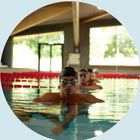
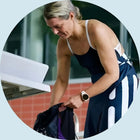
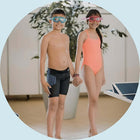
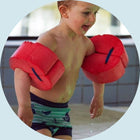
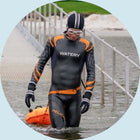
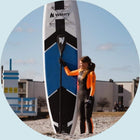
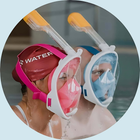



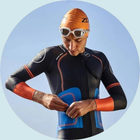
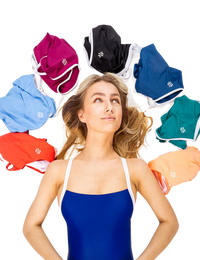
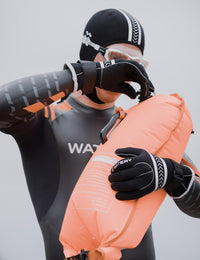
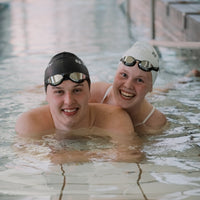



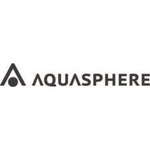
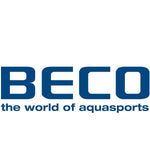





![[FREE GIFT 1] Watery earplugs](http://watery.ie/cdn/shop/files/activeearplugs-blue-1-klartilhjemmeside_1_2_d66304d0-3b01-490e-ac51-8cff659ba150.jpg?v=1768392135&width=200)
![[FREE GIFT 2] Watery Anti-Fog Spray](http://watery.ie/cdn/shop/files/1_8fa9a41d-737d-48b9-8976-59046b5d7f6a.jpg?v=1764791464&width=200)
![[FREE GIFT 3] Watery waterproof mobile case - Storm - Black](http://watery.ie/cdn/shop/files/Designudennavn_16_58bb54e1-1352-48e2-886e-468370189acc.png?v=1768392134&width=200)
![[GRATIS GAVE 4] Watery waterproof bum bag - Talia - Blue](http://watery.ie/cdn/shop/files/WateryTaliaBumBag-Blue_1_5cc1b961-5fe7-49d7-8e3f-f894e48765a4.jpg?v=1768392135&width=200)